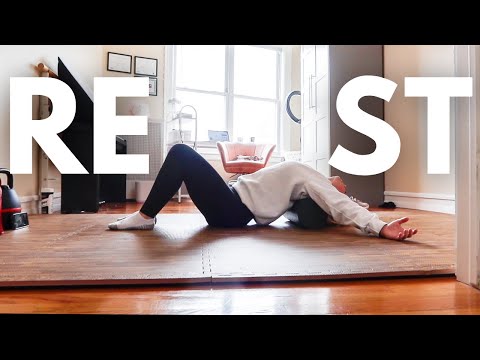Blowing balloons may seem like a simple and playful activity, often associated with parties and celebrations, but did you know it also offers several health benefits? This fun exercise can improve lung capacity, enhance respiratory health, and even help reduce stress. Let’s dive into the surprising benefits of blowing balloons and why you might want to incorporate this activity into your routine.

A few days ago, I visited a friend’s house—Cynthia Williams, who happens to be a professional nurse. I noticed her playing with a balloon, so I asked her what she was doing. She started explaining, and since she shared some interesting insights, I decided to jot down a few notes here.
1. Enhances Lung Capacity and Strength
Why It Matters: Blowing up balloons is a great way to work your lungs. The act of forcefully exhaling air into a balloon requires your lungs to work harder than usual, which can help increase lung capacity and strength over time.
Key Benefits:
- Improved Respiratory Function: Regularly blowing balloons can enhance your respiratory function, making it easier to perform daily activities that require endurance, such as walking, running, or swimming.
- Beneficial for Breathing Exercises: For individuals with conditions like asthma or COPD, blowing balloons can be a gentle and effective way to practice controlled breathing exercises, which are essential for managing symptoms and improving lung function.
- Prepares for Cardiovascular Activities: Strengthening your lungs through this simple activity can also benefit your cardiovascular health by making physical activities more manageable and enjoyable.
2. Promotes Deep Breathing and Oxygenation
Why It Matters: Deep breathing is crucial for oxygenating your body and maintaining overall health. Blowing balloons encourages deep, controlled breaths, which can lead to better oxygen intake and improved overall well-being.
Key Benefits:
- Enhanced Oxygen Flow: By focusing on deep breathing while blowing balloons, you increase the amount of oxygen that reaches your bloodstream, helping to nourish your organs and tissues.
- Relaxation and Stress Relief: Deep breathing activates the parasympathetic nervous system, which promotes relaxation and helps reduce stress levels. This makes blowing balloons an excellent activity for unwinding after a long day or during stressful moments.
- Improved Focus and Concentration: The rhythmic nature of deep breathing can also enhance mental clarity and concentration, making it easier to focus on tasks.
3. Strengthens Diaphragm and Abdominal Muscles
Why It Matters: The diaphragm is a crucial muscle involved in breathing, and blowing balloons provides an effective workout for this muscle. Additionally, the activity engages your abdominal muscles, helping to tone and strengthen them.
Key Benefits:
- Diaphragm Conditioning: Regularly blowing balloons can condition your diaphragm, leading to more efficient breathing and better respiratory health.
- Core Muscle Engagement: The effort required to blow up a balloon also engages your core muscles, offering a mild abdominal workout. Over time, this can contribute to a stronger, more toned midsection.
- Posture Improvement: Strengthening your diaphragm and core muscles can lead to better posture, which is beneficial for your overall health and can reduce the risk of back pain.
4. Reduces Stress and Promotes Mindfulness
Why It Matters: Blowing balloons can be a mindful activity that helps you focus on the present moment. The concentration required to inflate a balloon encourages you to slow down, focus on your breathing, and engage in a form of meditation.
Key Benefits:
- Stress Reduction: The repetitive nature of blowing balloons can be calming, similar to other forms of deep-breathing exercises like meditation or yoga. This can help lower cortisol levels, the hormone associated with stress.
- Mindfulness Practice: Engaging in this activity can serve as a simple form of mindfulness, allowing you to tune out distractions and focus solely on the task at hand. This can be especially beneficial during times of anxiety or mental fatigue.
- Mood Enhancement: The combination of physical activity and mindfulness can release endorphins, the body’s natural mood enhancers, leaving you feeling more relaxed and positive.
READMORE: How Physical Activity Can Boost Mental Health
5. Fun and Engaging for All Ages
Why It Matters: One of the best aspects of blowing balloons is that it’s a fun and accessible activity for people of all ages. Whether you’re a child, adult, or senior, you can enjoy the benefits of this simple exercise.
Key Benefits:
- Family-Friendly Activity: Blowing balloons is a great way to engage with children or grandchildren, making it a fun and healthy family activity.
- Easy and Cost-Effective: Balloons are inexpensive and easy to find, making this activity accessible to everyone, regardless of age or fitness level.
- Creative and Playful: Incorporating balloon games or challenges can make the activity even more enjoyable, encouraging you to keep practicing and reaping the health benefits.
Conclusion
Blowing balloons is more than just a fun pastime; it’s a simple yet effective way to improve your lung capacity, strengthen your diaphragm and abdominal muscles, reduce stress, and practice mindfulness. Whether you’re looking to enhance your respiratory health, find a new way to relax, or simply engage in a fun activity with loved ones, blowing balloons offers a surprising array of benefits. So, the next time you have a balloon at hand, take a deep breath, and enjoy the positive effects this playful activity can bring to your health and well-being.















